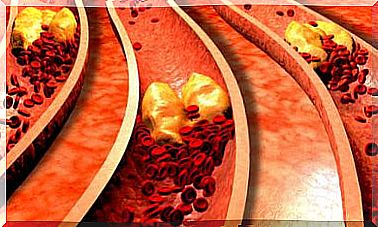Asthma
Asthma is one of the most common respiratory diseases. Its chronicity alters the quality of life of the people who suffer from it and crises can become moments of real stress.

Asthma is a chronic disease of the respiratory system. Faced with certain endogenous (internal) and exogenous (environmental) stimuli, the smaller caliber airways reduce their diameter; that is, the bronchi narrow, limiting the flow of air into the lungs.
In this article we share everything you need to know about this pathology. Keep reading!
Origin of asthma
The origin of the condition is quite complex. To begin with, it involves irritation, inflammatory processes, intermittent obstructions, and bronchial hyperresponsiveness or increased bronchoconstrictive response of the respiratory passages.
There are a large number of patients with mild and sporadic symptoms. However, some tend to have complications, called “asthma attacks.”
In these crises there are more severe and longer lasting discomforts. Consequently, breathing becomes difficult.
Who is affected by asthma?

According to data from the World Health Organization (WHO), around 235 million people in the world have asthma. This corresponds to 5% of the world’s population. In addition to the degree of development of the countries, it should be noted that 80% of deaths from asthma occur in countries with poor health.
Asthma is a disease present in all countries that affects people of all ages. However, it manifests itself more frequently during childhood. During this stage, asthma cases are usually associated with allergic processes.
Causes of asthma
The origin of asthma is not well established; however, it is important to distinguish between etiologic factors (such as genetics) and triggers. Although these do not cause the disease as such, they are responsible for some crises in diagnosed patients.
Etiological factors
- Genetic components. Family history of both asthma and allergies and related breathing difficulties.
- Exposure to pneumo-allergens. Due to substances that produce allergies and respiratory symptoms. The most important ones are:
- Microscopic fungi (product of humidity).
- Scales, fur and dander from domestic animals.
- Fabrics (such as wool).
- Smoking
- Sawdust.
- Mites.
- Dust.
- Pollen.
Triggers

Triggers are those associated with the appearance of symptoms. They are generally environmental in nature. Some of them are:
- Viral infections
- Smoke of the tabacco.
- Celiac disease or gluten intolerance.
- Polluted environments and poor quality air.
- Sudden changes in weather (intense cold, humidity or snow).
- Long-term use of some antibiotics and drugs.
Asthma symptoms
Symptoms can manifest themselves mildly or chronically, it depends on each patient. Almost always based on the activity of your immune system. Although they manifest according to the type of asthma and level of severity, in general, the person experiences:
- Cough. It is usually irritating, with little phlegm, and sometimes totally dry.
- Difficulty breathing. It usually occurs during exercise or high-demand physical activities. In severe cases it appears when speaking, and even at rest.
- Whistling in the chest. These are sounds that are produced by the passage of air through narrower airways. They are more easily detected by examining the patient with a stethoscope.
Other symptoms to consider include:
- Feeling of fatigue
- Throat pain and irritation.
- Sensation of pressure in the chest.
- Irregular breathing (slower or faster than normal).
- Nasal congestion (thick mucus, difficult to remove) and sneezing.
- Difficulty walking or speaking because it is very difficult to breathe (a serious symptom).
Diagnosis of asthma

The diagnosis of this disease begins with an evaluation of the clinical picture, family history and other antecedents. Among them, those risk factors are evaluated above all. In addition, if the patient has already been diagnosed, previous seizures are evaluated.
Many cases are related to allergic conditions. Therefore, a case of rhinitis and eczema lead to suspect the presence of the disease in the patient.
In addition, the doctor may request that some of the following tests be performed to pinpoint the diagnosis:
- Allergy testing.
- Blood tests.
- Pulmonary function tests.
- Chest and sinus x-ray.
- Arterial blood gases (when the asthma attack is severe).
Treatment
Unfortunately, asthma is one of the chronic diseases that has no cure; however, there are treatments that help control it. The goal of the treatments is both to reduce the severity of the condition and the recurrence of symptoms.
The goals of treatment are:
- Prevent and relieve chronic symptoms such as coughing and breathing difficulties.
- Help keep the lungs working properly.
- Reduce the need to use quick-relief medicines.
- Avoid chronic attacks.
Medical treatment includes:
- Anti-inflammatories: To begin with, corticosteroids are the most used (beclomethasone, budesonide, fluticasone).
- Bronchodilators: beta 2 agonists (salbutamol, terbutaline, salmeterol and formeterol), anticholinergics (ipratropium bromide) and methylxanthines are used.
- Antihistamines: although they do not control the disease, they are useful to neutralize allergic symptoms.
It is also important to carry out an action plan that includes the following measures:
- First of all, take the medicines correctly, at the right time and following medical advice.
- Seek emergency medical attention when necessary.
- Know to what degree the disease is controlled.
- Avoid environmental triggers.
- Finally, know how to take care of yourself when exercising.









